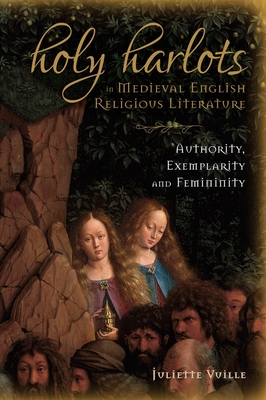Holy Harlots in Medieval English Religious Literature: Authority, Exemplarity and Femininity

Holy Harlots in Medieval English Religious Literature: Authority, Exemplarity and Femininity
This book, the first full-length study on the topic, aims to redress the situation, demonstrating that the seapparent outliers transformed mainstream concepts of piety and womanhood. It uses the Old English Martyrology and the Old English Life of Mary of Egypt to show that the early English conceived harlots becoming saints as a move from female to queer rather than as a gender inversion. In the later Middle Ages, "holy harlot" lives in the French of England and in Middle English (including the South English Legendary, the Digby Mary Magdalene, and in lives by John Mirk and Osbern Bokenham) are shown to demonstrate the centrality, from the twelfth-century rise of affective piety, of the harlot saints' femininity as a model for Everyman. They can also be seen as an influence on the writings of such women as Christina of Markyate, Margery Kempe, and Elizabeth Barton, and key to the self-representation of Bernard of Clairvaux and the Wycliffites.
PRP: 1276.17 Lei
Acesta este Pretul Recomandat de Producator. Pretul de vanzare al produsului este afisat mai jos.
1148.55Lei
1148.55Lei
1276.17 LeiIndisponibil
Descrierea produsului
This book, the first full-length study on the topic, aims to redress the situation, demonstrating that the seapparent outliers transformed mainstream concepts of piety and womanhood. It uses the Old English Martyrology and the Old English Life of Mary of Egypt to show that the early English conceived harlots becoming saints as a move from female to queer rather than as a gender inversion. In the later Middle Ages, "holy harlot" lives in the French of England and in Middle English (including the South English Legendary, the Digby Mary Magdalene, and in lives by John Mirk and Osbern Bokenham) are shown to demonstrate the centrality, from the twelfth-century rise of affective piety, of the harlot saints' femininity as a model for Everyman. They can also be seen as an influence on the writings of such women as Christina of Markyate, Margery Kempe, and Elizabeth Barton, and key to the self-representation of Bernard of Clairvaux and the Wycliffites.
Detaliile produsului









